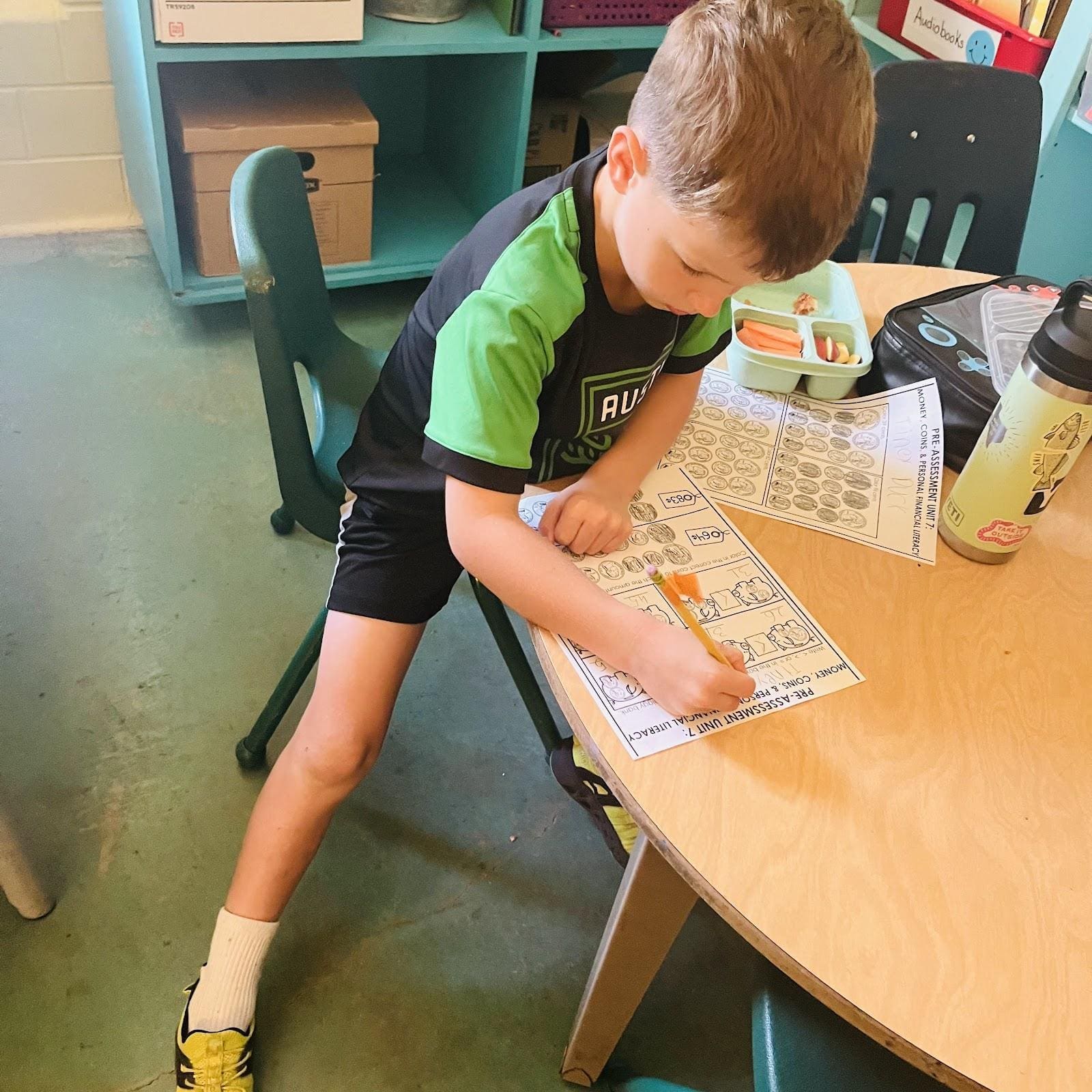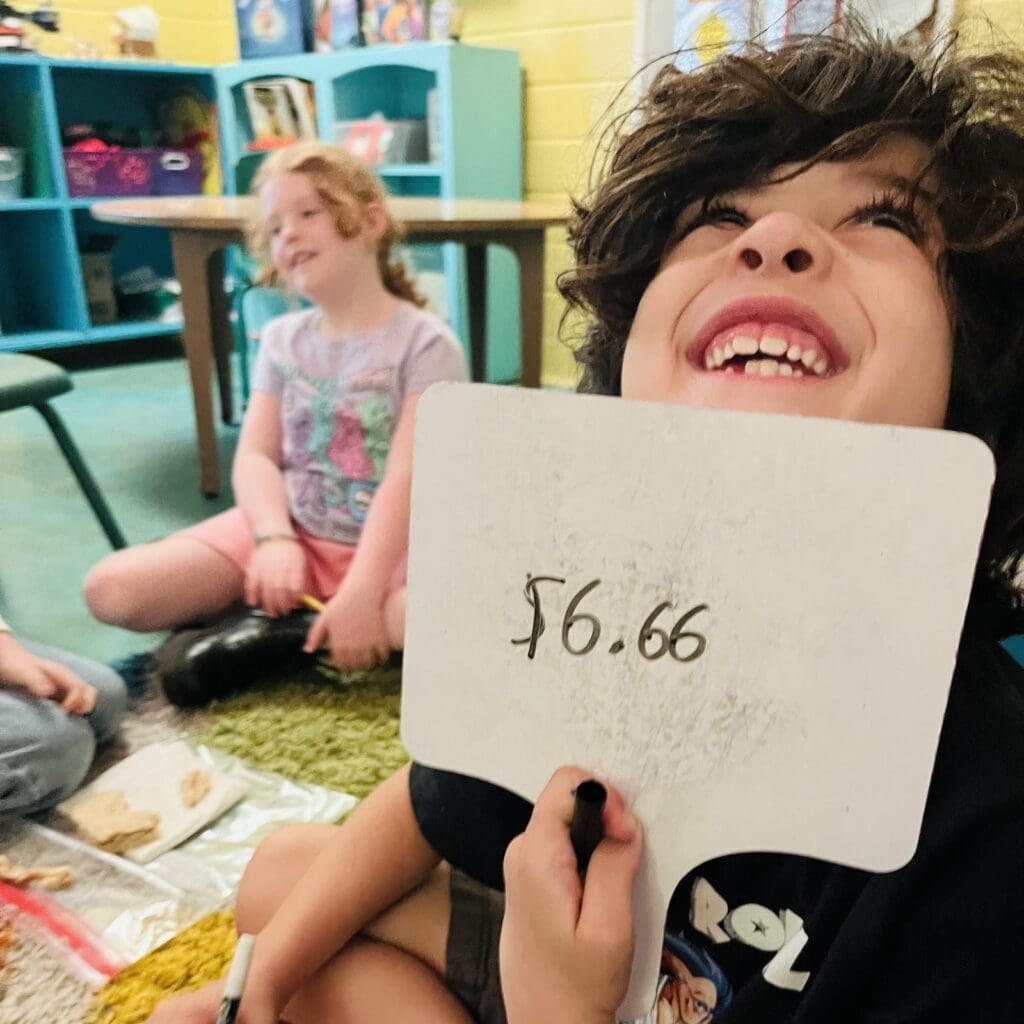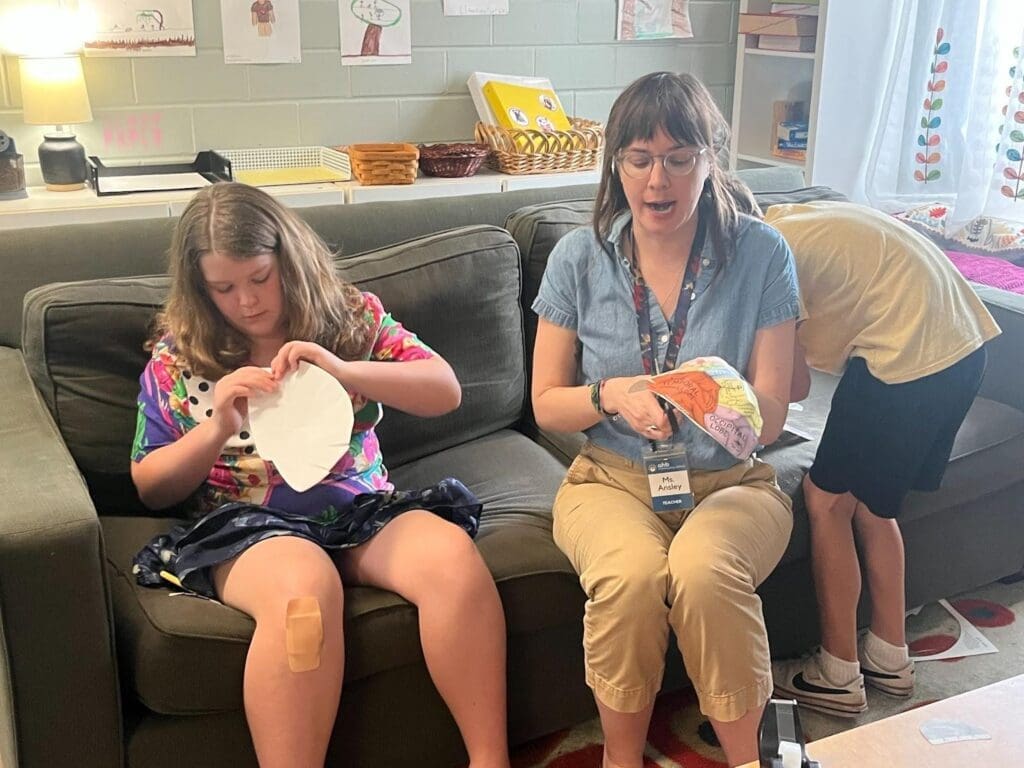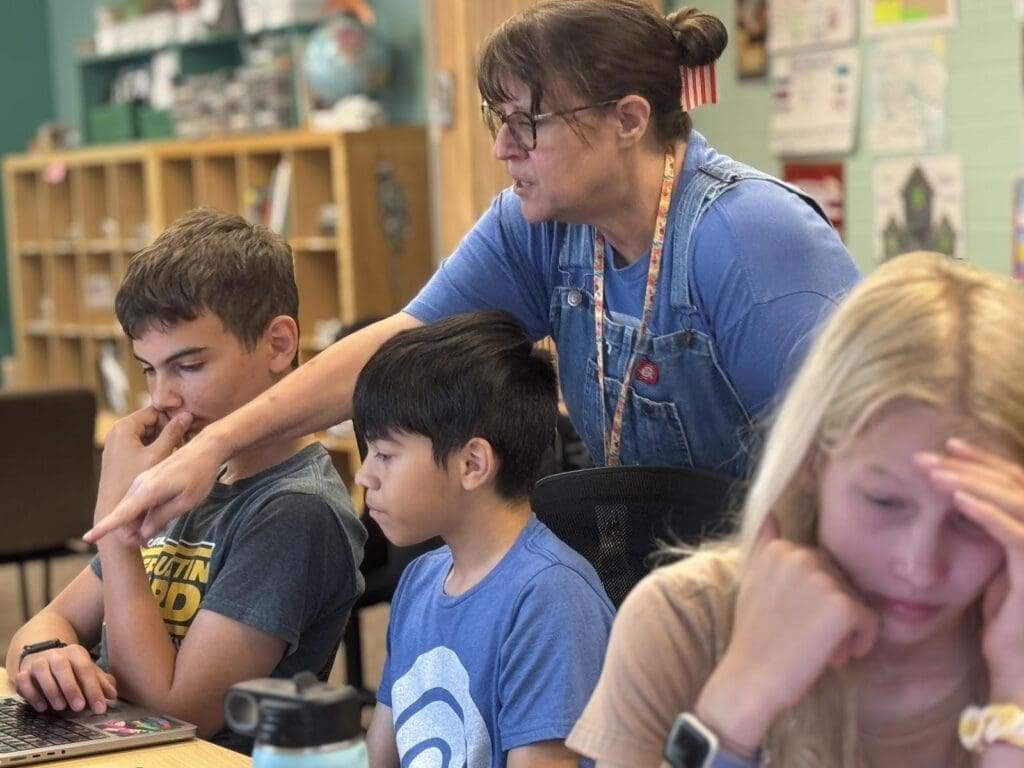Math –
Ms. Andrea’s math group launched our unit on money & personal finance by taking a pre-test and being formally reintroduced to the penny and nickel. We practiced identifying the heads & tails sides of both coins, skip counting by 5s, counting combinations of pennies and nickels, sorting coins and learned a few new games. At the end of the week we practiced paying for items using a variety of combinations of pennies and nickels and held our first money game day!

| 
|
|---|
Ms. Kelly’s crew kicked off an exciting new unit—fractions! We started with the fundamentals: What exactly is a fraction? How do we partition shapes? What do the numerator and denominator represent? After building our foundational understanding, we tackled a tough multiplication challenge each day. The kids teamed up to solve incredibly tricky puzzles, pushing their problem-solving skills to the limit. Ms. Kelly loves seeing kids struggle! 😜 But in the best way—productive struggle encourages effortful learning, helping students develop perseverance, critical thinking, and a deeper understanding of concepts. And wow, did this group rise to the challenge!
| 
|
|---|
Reading –
Ms. Kelly’s spelling crew is diving into the mysteries of the final k sound! Did you know that words ending in the k sound can be spelled with k, ck, or ke? Sure, you do—but do you know why? This week, the spelling group is uncovering all the secrets behind these spelling patterns, and they’re becoming expert word detectives!
Ms. Andrea’s spelling group tackled the “consonant + le” rule! We learned that when a word ends with a consonant + “le”, the consonant & “le” are always chunked together as the final syllable, oftentimes splitting double consonants between two syllables.
Book clubs had a fantastic week, diving deep into their stories with enthusiasm and thoughtful discussion. They engaged in meaningful conversations, sharing insights about characters, plot twists, and themes. The kiddos demonstrated strong comprehension skills and made thoughtful connections to the text. It was wonderful to watch how they continue to support each other and build confidence in expressing their ideas!

| 
|
|---|
Writing –
Our Beta writers began a nonfiction writing study by browsing a plethora of informative books in small groups and taking notes on their common text features. Next we reviewed a list of space themed topics and each kiddo chose one to pursue. Then, we learned how to collect important information by selectively highlighting text from nonfiction articles. Each Beta was given an article pertaining to their chosen topic and we went to work gathering information!

| 
| 
|
|---|
Theme –
Theme for our last quarter together is Outer Space and we are so excited! Before we began, we took a moment to think about and write down what we already know and what we wonder about space. Afterwards, we read a little about how our universe came to be. The Big Bang!
It is believed by most astronomers that the universe started as an extremely hot, dense, bubble-like space. It consisted of light and energy, too small to be seen by the human eye – not that we existed back then!
The heat and pressure from all of these particles squeezing against each other resulted in the Big Bang. This happened nearly 14 billion years ago, and before that point, there was nothing. No time, no space, no galaxies. Certainly no universe.
Seconds after the Big Bang, the first particles began to form. These were called protons and neutrons, which joined together to create simple chemical elements. These atomic nuclei couldn’t become atoms until they managed to capture electrons. It took 300,000 years for the temperature of the universe to cool down enough for this to happen!
Some of the first elements that ever existed were hydrogen and helium. The universe contained clouds of just these gases until it cooled down to a balmy 3000 degrees Celsius, allowing the other ones to form.
Eventually, when these atoms joined together over thousands and millions of years, they formed the stars and the galaxies – just like the Milky Way!
Larger atoms grouped together to form new molecules, which resulted in the birth of different types of stars. Galaxies begin to group together, too. As stars were born and then later died, the universe got new asteroids, planets and black holes.
Throughout all of this, the universe continued to expand. In fact, it’s still expanding to this day.
The Betas created a 14 foot history of the universe timeline. One end represents 14 billion years ago, when the Big Bang took place, and the other end represents the present day with the first humans. There are one foot increments in between representing 1 billion years each. The kiddos drew and labeled 13 important events that took place within that timeframe and we arranged them on our timeline. Things we noticed: the Big Bang did not create the earth, the sun or even the solar system- just tiny protons and neutrons were there first. Life on earth was created LONG after the earth’s formation which happened LONG after the Big Bang. We also noticed that the events did not take place evenly spaced out along the timeline. The events happened in groups with nothing in between for billions of years!
We ended the week creating a work of art that is not only beautiful to look at and educational! The kiddos started by writing down six very important events that took place after the Big Bang. Then brought each event to life through artistic representation. Looking good!

| 
| 
|
|---|---|---|

| 
|
|
|
|
|
*** Want to see more pictures, videos and more details about each day? Don’t forget to check us out on Instagram! ***
@ Beta_class






